Gallery Network
6 Questions for Artist Ivan Gette on Notagallery, the Berlin-Based Outpost He Founded to Foster Community and Culture
Notagallery aims to disrupt the traditional artist-gallery relationship, and explore new modes of collaboration.
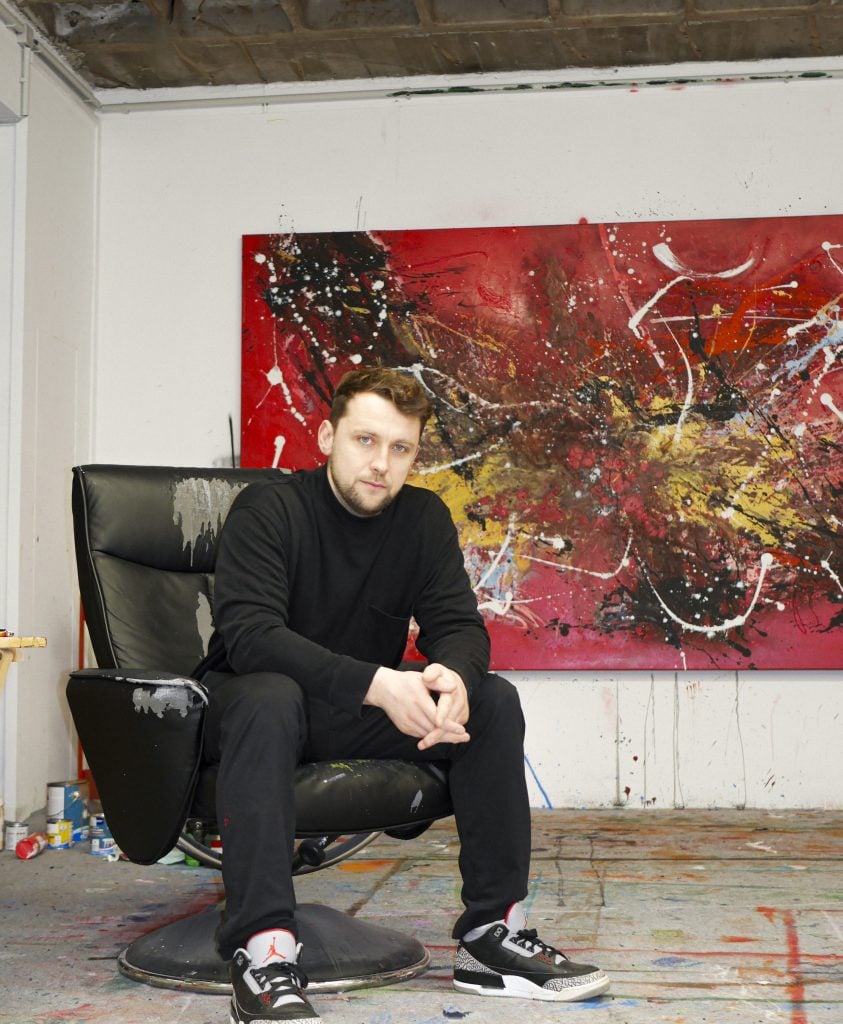
Notagallery aims to disrupt the traditional artist-gallery relationship, and explore new modes of collaboration.

Artnet Gallery Network

In 2022, artist Ivan Gette founded the cheekily-named Berlin-based Notagallery with the aim to create a new model of artistic exploration and collaboration that exceeded the boundaries of the typical white cube gallery. In addition to exhibiting and promoting art and artists across a diverse range of disciplines and mediums, Notagallery is set up to be a center of culture and community, both locally and internationally.
Gette, a painter whose style he describes as “abstract nihilism,” observed a gap in way that traditional galleries operated both through first-hand experiences as well as the experiences of fellow artists. Gette’s early career included stints as an art director and marketing manager at Nike, which, coupled with his experience as an artist, made the idea of founding his own gallery a natural next step. Leveraging his unique skillsets, Notagallery has been able to develop a network of collectors, artists, and art enthusiasts committed to its vision.
Notagallery will present a solo exhibition of Gette’s work in “Gemischte Gefühle / Mixed Feelings” on view February 17–March 1, 2024, allowing visitors a comprehensive look into Gette’s creative vision.
We caught up with Gette to learn more about what inspirations drove him to found his gallery, as well as what advice he has for up-and-coming artists.
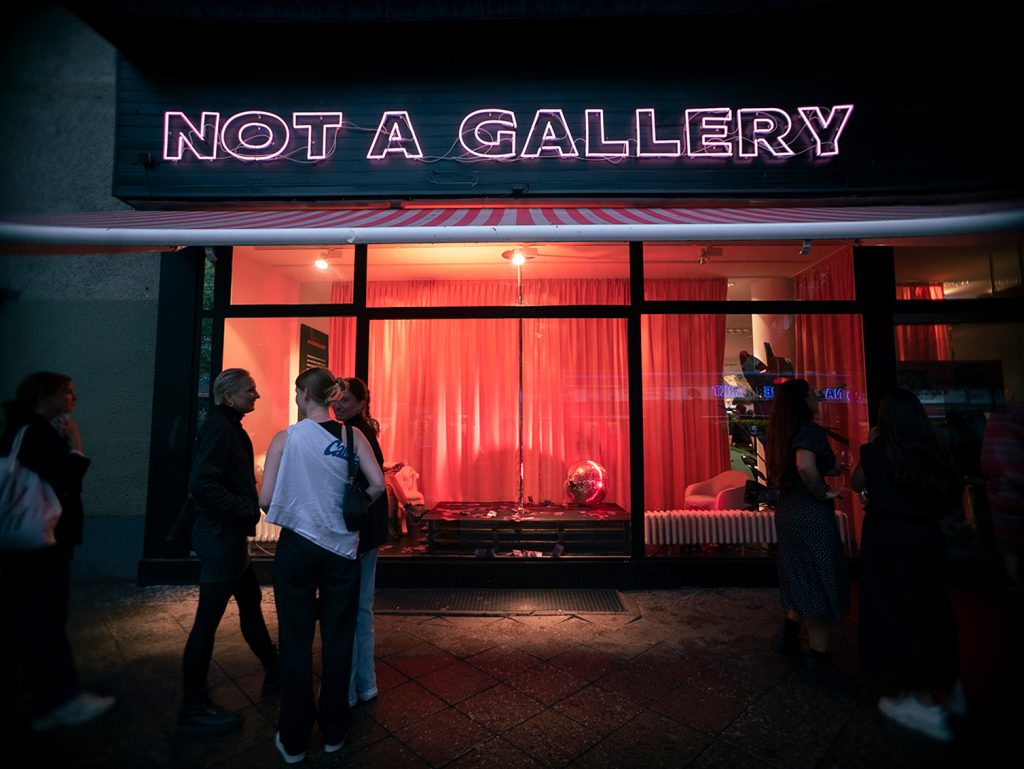
Courtesy of Notagallery, Berlin.
What was the primary impetus or inspiration that led you to found Notagallery in 2022?
The birth of Notagallery was more than just the establishment of a new art space; it was the manifestation of a vision fueled by personal experiences and a desire to transform the conventional art world.
The main inspiration stemmed from my strong desire to create a change in the traditional art gallery model and create an alternative space that encourages experimentation and innovation. This was deeply rooted in my personal experiences, particularly the challenges I encountered when trying to enter the conventional art world without a well-established network or a classic art background.
I envisioned having my own gallery that challenged the mold of the traditional, exclusive, and intimidating galleries. I wanted a space where young artists could exhibit alongside mid-range, established artists, fostering mutual support and collaboration. The only way I saw to break this cycle was by organizing well-curated group exhibitions under specific themes, giving artists a platform to submit their work. I wanted also to create a space where art, music, and culture could come together to thrive—a vision that had always been a part of my life.
In these first years of the gallery’s operation, what are some of the biggest lessons you’ve learned?
Starting the gallery from scratch, coming from a different background, required me to learn a multitude of lessons. Some of the most valuable ones include understanding that a sold artwork is only truly sold when the ink is dry on the contract. A solid contract holds more weight than a simple handshake or verbal agreement, even though I wish it were different. In the art world, it’s crucial to be discerning about the people around you, as not everyone who smiles in your face has good intentions. Paying attention to individuals whose actions align with their words is key.
Additionally, the importance of passion and the crucial lesson of patience. Embracing patience was key in the process of creating meaningful change, allowing me to thoughtfully develop and realize the vision for the gallery.
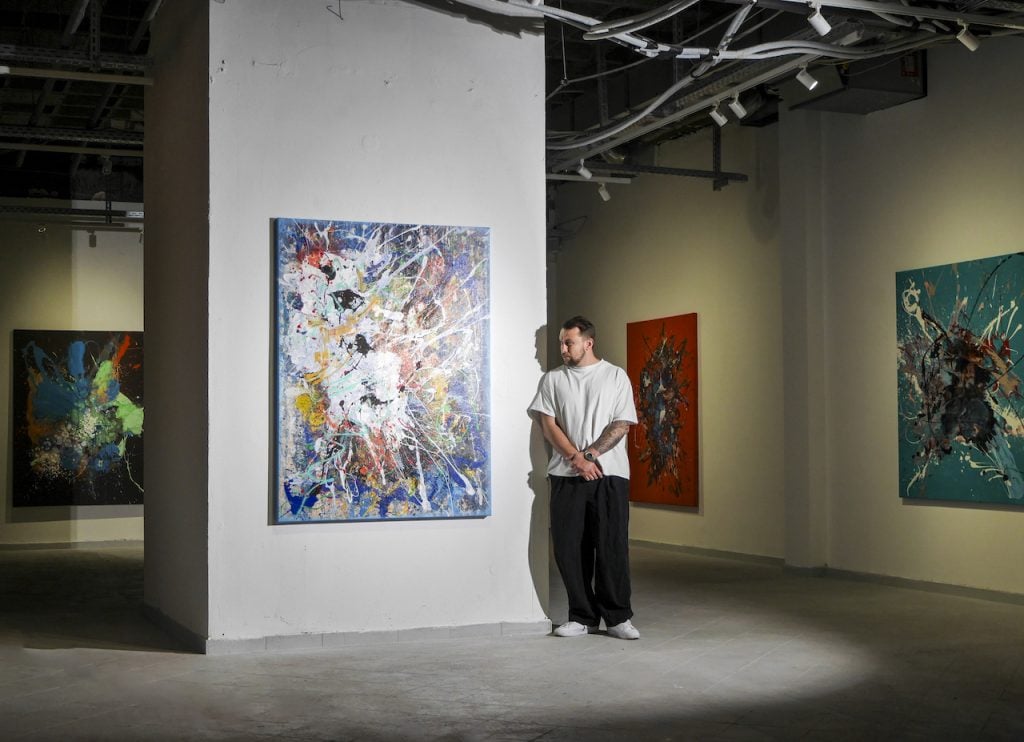
Ivan Gette inside his solo exhibition “Gemischte Gefühle / Mixed Feelings” (2024). Courtesy of Notagallery, Berlin.
How would you describe the mission or ethos of Notagallery?
The mission and ethos of Notagallery revolve around challenging traditional norms of exhibiting art and providing opportunities for emerging and established artists to be heard and seen.
Our core principle is to support and uplift one another by showcasing artists’ works together. We aim to create a dynamic hub within the Berlin art scene, pushing boundaries and fostering artistic exploration. Our ultimate goal is to open doors for artists who follow their passion and create a space where creativity, music, and culture in all its forms can thrive.
Notagallery’s vision is designed to be a concept that can extend to other cities and countries like a franchise because there are countless talents worldwide in need of a stage to shine.
As an artist too, does your artistic practice affect or inform how you run the gallery? Or, vice versa, has the experience as a gallerist influenced your practice at all?
While I make an effort to separate both roles, the influence of one on the other is undeniable. I became a gallerist primarily by recognizing a problem that I, as an artist, had experienced firsthand.
My approach to creating art, with a focus on total freedom, aligns with Notagallery’s mission of embracing experimentation and maintaining an open mind towards new projects while ensuring high-quality execution of artists’ works.
This approach allows me to connect with the artists we showcase, try new things, and not be afraid to explore, even if it leads to what some may perceive as “failure.” In art, there’s no definitive right or wrong.
Connecting with artists on a personal level is easier for me because I can often relate to their struggles and their vision. This experience has exposed me to diverse perspectives as a gallerist and pushed me to explore the intersection of art, technology, and social issues in my own practice. Being a gallerist taught me a better understanding of how the market works and what the galleries pay attention to. This knowledge helps me to advise other artists, stating thoughts on what to focus during an application process for example.
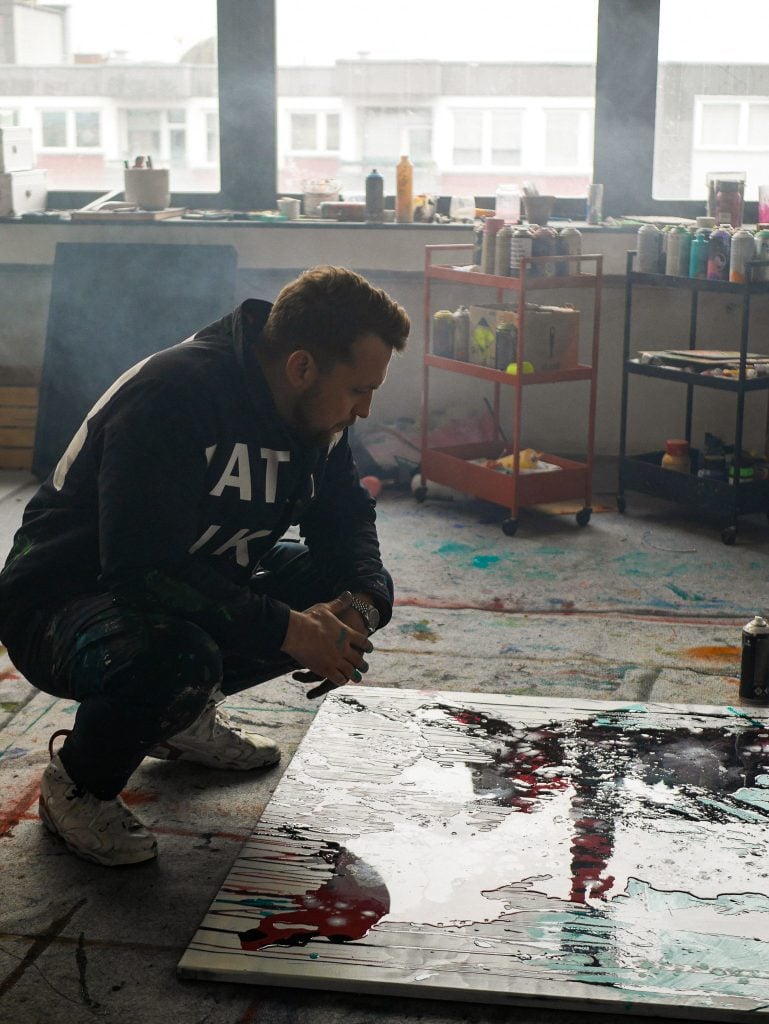
Ivan Gette in his studio. Courtesy of Notagallery, Berlin.
What advice would you give to artists just starting out in their career who may be looking for gallery representation or collaboration?
I’m continuously learning and growing, and while I may not be in a position to offer advice in a way like the big galleries do, I’d be happy to share a few insights I’ve gathered on my journey.
For emerging artists who are just embarking on their careers and exploring gallery representation or collaboration, here are some suggestions that might be worth considering. However, it’s important to remember that each artist’s path is unique, and what works best can vary for each individual:
These are just my two cents, aside from that, I highly recommend reading the book “Making It in the Art World” by Brainard Carey for further guidance. Definitely worth reading if you are an emerging artist!
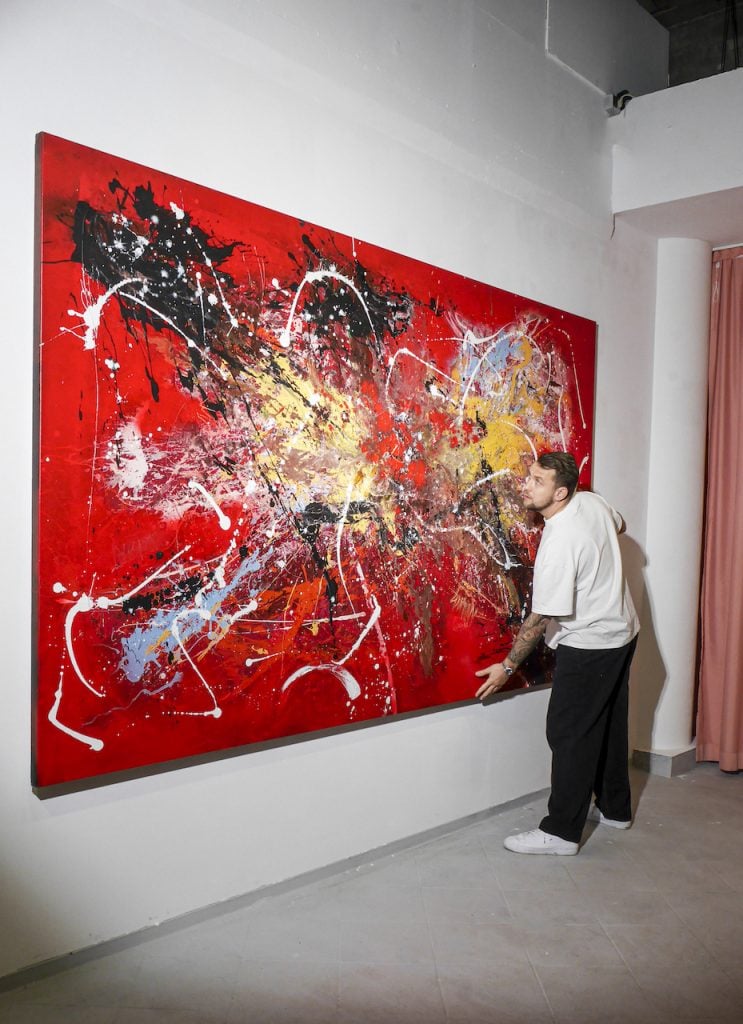
Ivan Gette inside his solo exhibition “Gemischte Gefühle / Mixed Feelings” (2024). Courtesy of Notagallery, Berlin.
What do you see as the role of art spaces in the world today?
Art spaces are vital hubs in today’s world, transcending their roles as exhibition venues to become vibrant starting point of creative expression and cultural discourse.
They serve as incubators where artists from an array of disciplines including music, visual arts, fashion, and beyond converge, collaborate, and drive artistic innovation.
I see galleries and art institutions in a harmonious collaboration, forging an integrated network that elevates artist visibility and fosters dynamic dialogues amongst a worldwide collective of art lovers, collectors, and creators.
This synergistic partnership is essential in cultivating a more interconnected and dynamic art landscape. These spaces significantly increases the cultural richness of communities, offering individuals opportunities to engage with art on a deeply personal and emotive level.
The only way this can work is if we can develop collaboration in between the art world. This involves not only partnership between galleries and actors of the art scene but also necessitates active cooperation and support from institutions and government.
Learn more about Notagallery, Berlin, here.